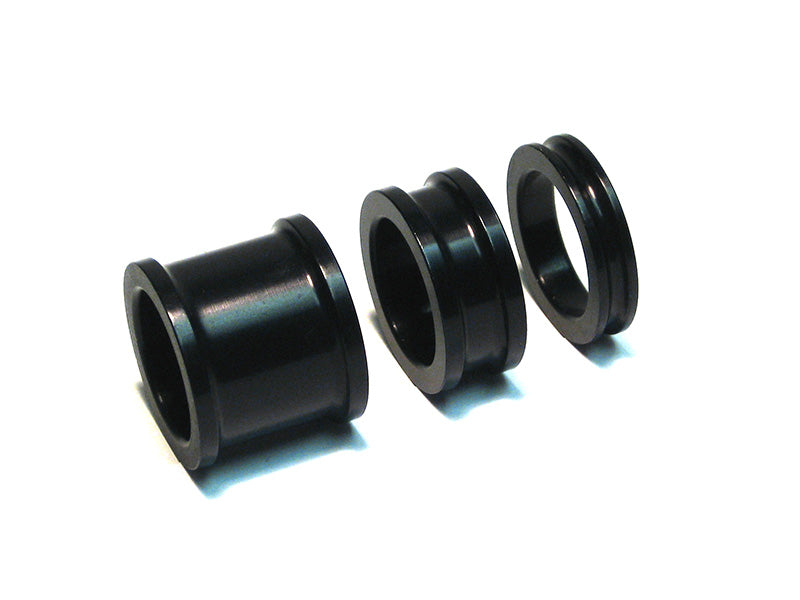rain setup
If you choose to run a particular series that races in the rain, it is always good to have a spare set of wheels with rain tires already mounted. The series will dictate which compound of rain tires you are permitted to run. Many times during the race season we are faced with unpredictable weather. When rain moves in, you want to be prepared to make your adjustments to a rain set-up quickly. Often times, you are only permitted 10 - 15 minutes to make the change. We like mounting rain tires on 5" wheels to provide a larger contact patch.
Here is a list of things to consider to obtain more grip in the rain:
1. Move front wheels out as far as possible on the spindles using spindle spacers.
2. Move rear hubs in on the axle to "square up" your tires.
3. Move weight to the top of the seat if you have time.
4. Place towels in bottom of seat to raise your driver up. This will raise the center of gravity.
5. You will also need a rain cover for your air filter. You can use a ratio rite, cut a plastic Gatorade bottle, etc. You do not want water sucked into your carb intake.
6. Spray your ignition wires with WD-40.
7. Tighten the rear bumper.
8. Drill drain holes in the bottom of the seat to allow water to drain.
9. If time permits, you can also increase Caster a few degrees, Toe out a few millimeters, and increase positive Camber.If it is a light rain, no puddles on the track you should start with 12 lbs. of tire pressure.
10. If it is a heavy rain and the track becomes puddled, you should increase to 20 psi. Keep in mind, running high pressures on a damp track will shred your tires.
Things to remember when racing in the rain:
1. Do not run your normal race line. Once the normal race line becomes wet, the rubber will become very slippery. It is best to avoid running on the rubber.
2. Have patience and make smooth steering inputs. Be smooth on the brake and throttle.
3. Clean the inside of your helmet visor with some sort of anti-fog coating, and the outside with RainX or something similar.
4. Wear a rain suit to keep dry. Neoprene gloves and boots can also be worn. Try to make your driver as comfortable as possible while they are in an uncomfortable situation.
5. After running in the rain, clean your chassis thoroughly. Lubricate your bearings, and soak everything down with WD-40 to prevent anything from rusting.

Precision Karting Technologies, LLC
PKT 17mm Wheel Spacers
Product Details
PKT 17mm Wheel Spacers
5mm
Wixom, MI
28718 Wall Street
Wixom MI 48393
United States
